QuestionMy questions are as follows I have a 25 gallon tank with 4 cichlids and two eclipse catfish. For about a yr or so the tank would get very dirty right after I clean it and I'm not overfeeding them I feed them every 2 days. I put the right chemicals in it and I dont over do it either. I get the water tested and it always comes up positive with no glaring imperfections. I'm wondering if maybe it could be the fish and the stuff they put out?? Also, after about 2 months I replace about 25% to 50% of water because it seems that there is poor circulation in the tank the filter is from the set that I got from the tank and all the food turns into a nasty looking worm(s)attached to the decaying food at the bottom when stirred up. On the side of the tank there would be thousands of almost microscopic little white wormies just moving around I would clean the side of the tank and replace water but they come back. I recently got rid of the catfish and two of the cichlids because the others died of something looking like (ICH). However, I have all the medicines for it and on the fish it looked like a slime ball following the fish on the body of it. I got rid of the remaining fish because it's not fair to them and die without knowing what is going on. I would like more fish in the future but would like your help with this problem
Thank You
AnswerGood morning, Tim, thank you for your question.
Whoa! Let's back up a little here. I see now that what you are asking for is help with re-establishing your tank. That sounds like a plan. It is obvious that you care about your fish and consider that they are living beings. I trust that you are going to do better the next time around.
I can tell you exactly what went wrong. I am glad you wrote! This is your chance to become better informed and thereby a better fishkeeper. Your problems started with stocking and compatibility. Naturally, under-filtration followed (since no filter is going to be able to keep up with that kind of bioload in relation to that volume of water), coupled with a water change schedule that was much too infrequent. Let's start by analyzing these problems one by one...
First off, did you know that your two eclipse catfish (Horabagrus brachysoma) can grow to 18 inches? They were doomed in a 25 gallon system. Take a look at these pics...
http://www.aqualandpetsplus.com/Catfish,%20Sun.htm
...And you will see that they were the wrong choice for your tank. Stay away from bala sharks, Columbian sharks, iridescent sharks (please, no) - I know they're awfully cute in the store as youngsters, but they soon grow up to be tankbusters. They are scaleless fish that do not tolerate medication well, produce loads of waste, and are simply not meant to be kept in an average sized home aquarium. Especially not when there are so many other fine choices!
Now for the cichlids. There are hundreds if not thousands of species of cichlids grouped into 140 classes. So telling me you had cichlids doesn't tell me much, but the only cichlids that can live in a 25 gallon tank are the dwarf kind. I am going to take a guess here and say you probably had Africans. Most grow to be around 4"-6", so having kept just the cichlids would have been overstocking. Nix the cichlids until you are more experienced and/or have a bigger tank, and you will have a much better shot at success.
Now, about water changes. It sounds like you got your water tested at your local fish store. It is much better to have your own test kits, Tim, for many reasons...convenience, the fact that water chemistry changes slightly with transport. The main reason being that most fish stores don't seem to pass along any useful information about your water unless you grill them. They usually say it's "fine" or that something is "a little high/low, but ok"...this really doesn't help you in understanding your water chemistry.
The most important thing to know is that a cycled tank has 0 ppm of nitrite and ammonia at all times. If there is any detectable ammonia, either the tank is not through cycling, or the bio-load is too much for the beneficial bacteria to keep up with and the tank crashes. This results in cloudy milky water, muddy water, green water...unsafe, unappealing water for you to look at and your pets to live in! A tank that is properly stocked and well maintained never has this problem, thankfully. Let's continue...
Maintenance is very important. Think of a car without an oil change: eventually, it breaks down. The longer you wait, the worse it gets. Depending on your stocking level, you should be changing out AT LEAST 10% of the water a week. With your stocking level, you should have been changing 50% of the water ever week, not once every 2 months. How could you even see in that tank, Tim?! I have a 10 gallon tank with two gold rams, three bloodfin tetras and one otoclinus. I change 20% of the water every week. If you don't feel like changing out more than 3 gallons a week, you will need to stock lightly and appropriately, but you must change out at least that much water in the future.
Next, filtration. Do you have an Eclipse system? It sounds like it. Some people love them...I, personally, can't stand them! I have a 12 gallon Eclipse, of which I am using only the acrylic tank itself. I could fill up pages with my gripes about the Eclipse systems, but basically they are as follows: closed system doesn't allow the tank to "breathe", that is for normal evaporation to take place, built in light and hood is a pain to service and clean, the biological filtration is adequate in the tank but the mechanical filtration is not, the filter doesn't move the water around much at all...et cetera. If you do have an Eclipse, and wish to keep your built-in hood and filter, you will have to increase the aeration by adding a bubbler (airstone powered with an air pump via airline tubing), otherwise the oxygen exchange might not be adequate for your fish.
The worms you discuss should not be there at all. They are likely not parasites (unless you see them parasitizing your fish) but scavengers that appear in dirty tanks. Planaria are the most common among these pests. While harmless, they thrive in dirty water and poorly maintained tanks.
Have a look at this brief article on aquarium maintenance:
http://www.aquariumfish.net/information/maintenance_schedule.htm
Okay, now that you're aware of what went wrong in your tank, this is what you'll need to do to make it right:
1. Set out a bucket of cold water for 24 hours, or use dechlorinator to get the sanitizer out of your tap water. You'll need this water for cleaning. Take 3 gallons of your old tank water (if you still have it) and store it.
2. Save your filter media. Rinse it with some of the cold water. You can put a fresh filter pad on top of the old one.
3. Vacuum the gravel. Rinse the gravel with the water from the bucket. You will want the water to rinse fairly clean. Don't use boiling water or straight tap water. Keeping the beneficial bacteria in your gravel intact will speed up the re-cycling process considerably.
4. Do a 90% water change. If you are filling your tank with a hose, add the necessary amount of dechlorinator to the existing tank water or to the first gallon of water that you fill. So if you are using Prime, that would be ~66 drops @ 3 drops per gallon. You can estimate, since Prime can be used safely at double doses.
5. Run your filter and bubbler and let the tank sit for 48 hours. You can turn the lights on according to you regular schedule. It will take a while for the water to settle.
6. Keep monitoring the water. I highly recommend you purchase your own (preferably liquid) water test kit. Nitrites and ammonia must be at 0 ppm before you introduce any new fish. Even after fish are introduced, water quality should be monitored twice a week for the first month.
The kind of fish to get depends largely on your preference. It is best to understand the pH of your water when considering stocking your tank. Water that's neutral has a pH of 7.0, below that is considered acidic, and above that is considered alkaline. Livebearers such as mollies, guppies platies, swordtails - prefer water that is at neutral or higher. Tetras, rasboras, danios, barbs (mostly) prefer acidic water, that is below neutral.
This article should help you to choose as well:
http://fins.actwin.com/mirror/fish-popular.html
To people that enjoy cichlids and sharks, I recommend a community of tiger barbs (these come in two other variants, gold and green) and one rainbow shark or one red-tailed shark or one red-finned shark. Each of these sharks need to be kept as single species. You can look up more information on these fish online, using Google.
Okay, Tim! I have imparted as much information as I reasonably can, and I hope it has helped you. There is much to read and learn about - the internet has really made researching fish easy and fun. Educating yourself as much as possible will make this hobby more satisfying for you. Nothing satisfies like success!
Feel free to write back any time.
Happy holidays,
Nicole

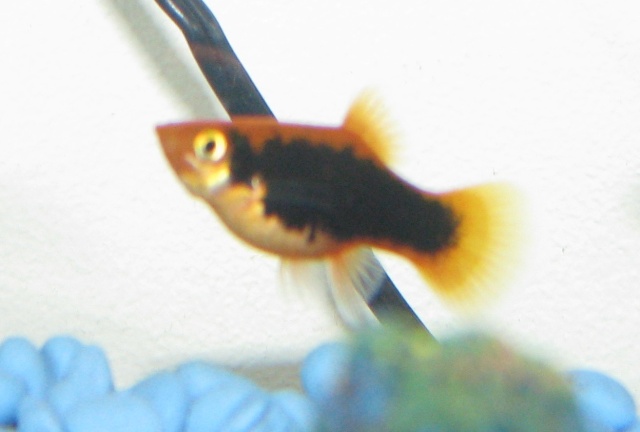 What kind of fish this is? Plus baby fish..now what?
QuestionTuxedo Platy?
QUESTION: Hi, I have three
What kind of fish this is? Plus baby fish..now what?
QuestionTuxedo Platy?
QUESTION: Hi, I have three
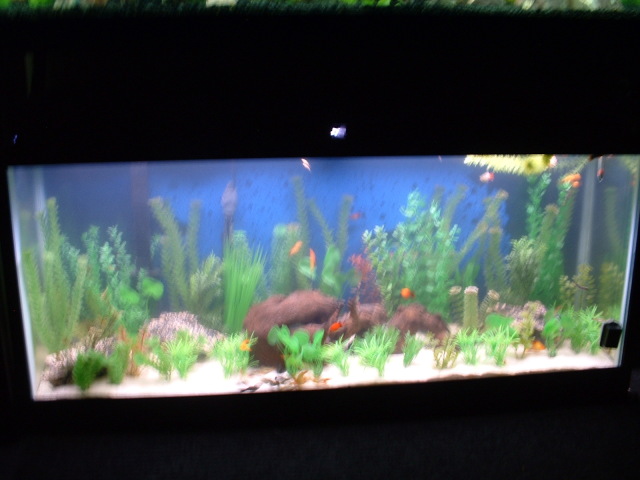 is it TB?
Question
55 galon aquarium
Hi,
I have a 55 gallon fw ta
is it TB?
Question
55 galon aquarium
Hi,
I have a 55 gallon fw ta
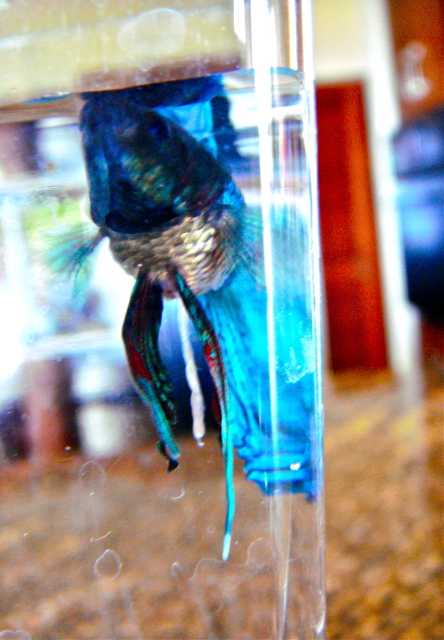 Sick Siamese Fighting Fish
Question
Hi. I have a male Siamese Fighting Fish
Sick Siamese Fighting Fish
Question
Hi. I have a male Siamese Fighting Fish
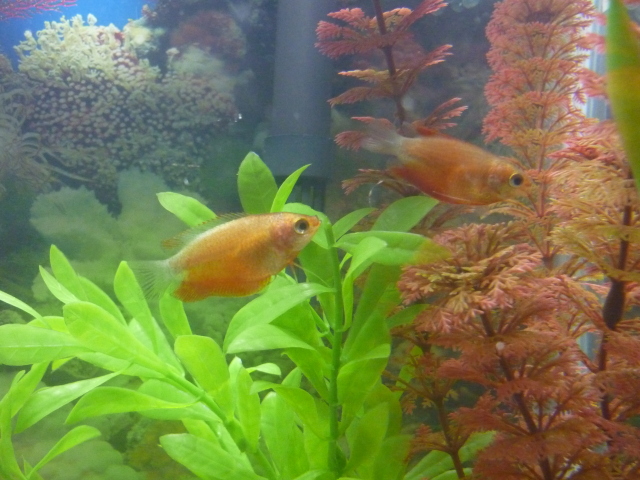 Red Dwarf Gouramis.
Question
Red Gouramis
I recently bought to red dwarf go
Red Dwarf Gouramis.
Question
Red Gouramis
I recently bought to red dwarf go
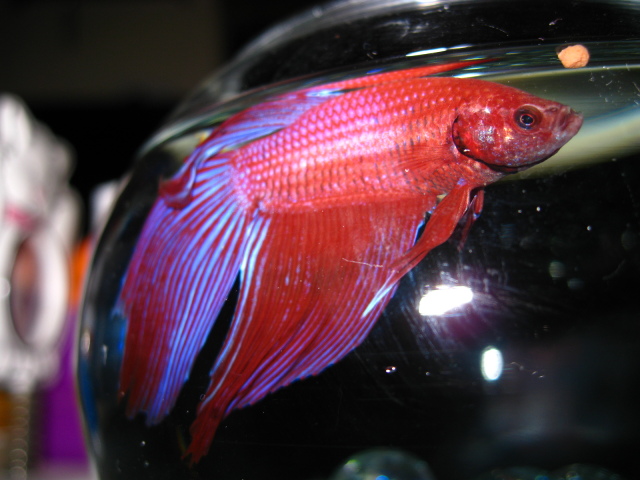 Betta Fish wont eat.
QuestionPeso
QUESTION: On March 4th, a friend ga
Betta Fish wont eat.
QuestionPeso
QUESTION: On March 4th, a friend ga